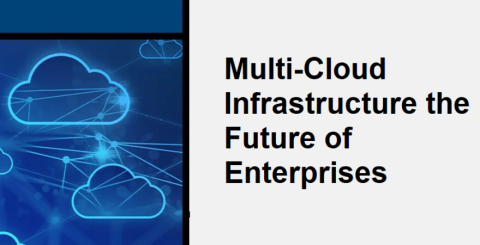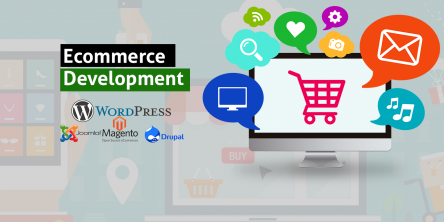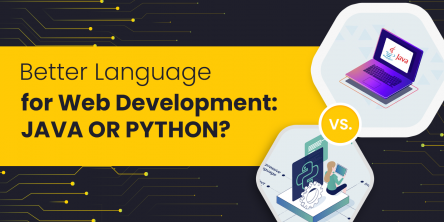Is Multi-Cloud Infrastructure the Future of Enterprises?

The explosive growth of cloud computing has enabled enterprises to adopt new technologies at unprecedented speeds. Just look at the many SaaS solutions available today, compared with just a few years ago! Many business leaders have wondered if the same could be true when it comes to enterprise infrastructure; that using one cloud provider (or two or three) would be enough for their businesses’ needs. The answer to that question is no and here’s why multi-cloud infrastructure is the future of enterprises.
What is multi-cloud infrastructure?
Multi-cloud infrastructure is a new technology that provides enterprises with a way to utilize multiple cloud infrastructures in order to avoid being locked into one provider. This also allows them to have some level of control over where their data is stored. With this, enterprises are able to enjoy many benefits such as cost efficiency.
Nowadays, more and more companies are turning towards multi-cloud providers for their needs as it has proven its worth. Furthermore, it is easier for companies to transition from using just one provider to using a number of providers by utilizing this technology.
Benefits of multi-cloud infrastructure for your business
Multi-cloud infrastructure is the new way to go. It’s no secret that cloud technology has become an important part of business operations in today’s day and age. But there are multiple ways to leverage cloud technology, and many companies have begun to notice the benefits of multi-cloud infrastructure over its competitors. In order to obtain full advantages, partner with IT Consulting Company.
Improved performance
Cloud infrastructure offers the best prices and the most flexibility. With cloud providers like Google and Microsoft, you can choose the level of service that's right for you.
For example, if you want to save on storage costs, but still have a high level of performance, you can choose a lower plan that suits your needs. This way, you'll only pay for what you use without any hidden charges or monthly fees. You'll also have access to all your data anywhere at any time with automatic backups. You can even move your data from one cloud provider to another in just minutes.
Increased reliability
With so many providers to choose from, you can take advantage of a diverse network that offers increased reliability. If one provider is down or suffers an outage, you will still have access to all of your data with the other providers in your network.
Plus, if there's a security risk with one service, it's safer to have other services as backups and not rely solely on that one service. For example, if a cyberattack occurs at Amazon Web Services (AWS) then you'll be protected because Google Cloud Platform (GCP) would be unaffected by the attack.
Additionally, when using multiple cloud providers, you won't experience problems with data migration between providers. You'll also get faster responses since each company can respond quickly without having to wait for another company to complete its task before starting theirs.
Greater flexibility
With a single cloud deployment, you're often stuck with a single provider and will have to rely on them for all your needs. Multi-cloud solutions give you the flexibility to choose different providers depending on what you need. You can also use one cloud as a disaster recovery solution, and another one as a backup.
This way, if something goes wrong with one provider, you'll still be able to keep running smoothly. If you've got two providers set up, one that's considered high risk and another that's considered low risk, then when something goes wrong with the high risk provider, it automatically switches to the low risk option so that everything doesn't shut down. And it's not just availability-in most cases, it'll improve your security too by limiting access to sensitive data.
Enhanced security
Multi-cloud infrastructure can help improve your company's security because it enables you to use resources from a variety of providers.
By doing this, you won't put all your eggs in one basket by having everything on one provider. For example, if that provider is hacked or goes out of business, you'll still have other resources available to keep the organization running smoothly. Multi-cloud also helps mitigate risk and make IT more efficient because organizations are able to leverage different tools and services depending on what they need at any given time.
If your main vendor has downtime, you can quickly switch over to an alternate service while they're getting their systems back up and running.
Increased scalability
Scalability is the ability to expand and contract with the needs of your company. With a single cloud provider, you are putting all your eggs in one basket. If that provider experiences downtime or becomes unreliable, then you will experience downtime too. The advantage with a multi-cloud solution is that you can use different providers depending on what you need in each situation.
Provides Necessary Resilience
A major benefit to a Multi-Cloud Infrastructure (MCI) is the resilience it provides. There are many potential points of failure that can occur within a single cloud provider, which is why MCI offers the ability to diversify resources and distribute workloads across multiple providers in order to avoid any one point of failure. Additionally, the cost savings associated with spreading workloads over multiple providers could help you save money on technology.
Conclusion
Businesses are always looking for ways to lower their IT costs and make themselves more competitive. One way to do this is by investing in a multi-cloud infrastructure. This will allow you to use the best features from different providers and can help you to avoid vendor lock-in. By using a cloud that combines the best features from multiple providers, you will be able to save money and easily switch providers if needed
Similar Articles
Explore the power of Scala in modern web development! Discover its advantages, best practices, and real-world case studies. Elevate your coding journey today.
Do you know 24% of retail purchases will be online by 2026? Hence, eCommerce development is the trend, providing lucrative business opportunities to budding entrepreneurs. However, developing an eCommerce website is not an offhand process.
Wave goodbye to the cost and efforts of separate web application development for every operating system out there just to reach your customer base. Progressive Web Apps (PWAs) are here to open up a whole new world of accessibility for you.
Your website is the center of your business’s digital ecosystem, just like a brick-and-mortar shop. What matters here is the perception of the prospective customer visiting and the experience one is taking away.
When you are an entrepreneur, every decision you make needs to be well-informed and strategic. As every decision you make will impact your bottom line and your ability to grow. That's why thinking carefully before choosing any eCommerce platform is essential.
Are you a business owner planning to establish an online presence but unsure of the web development cost? A well-designed and functional website is crucial for a business’s success. However, determining the cost of web development is one of the common challenges faced during the website development process.
The increasing prevalence of cyber threats and the potential risks associated with data breaches make it crucial to implement robust security measures. This helps protect your business, customer information, and brand reputation.
In the age of digital technology, every business must have an online presence. A website is crucial in establishing this presence, making web development an integral part of modern business. To create a successful website, choosing a reliable web development platform is imperative.
App developers have discovered React Native app development to be the key to building robust mobile applications, a trend that has increased since 2015.




e6f0.png)



